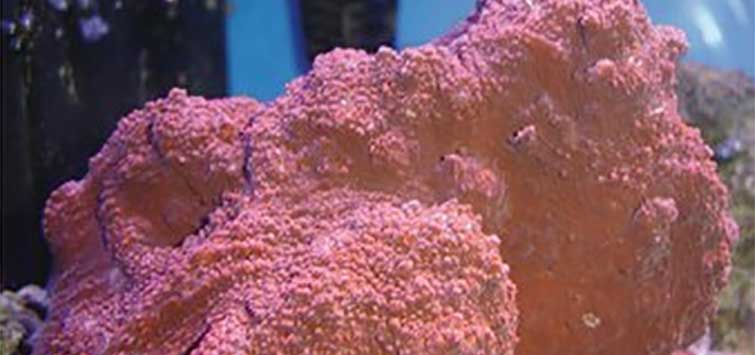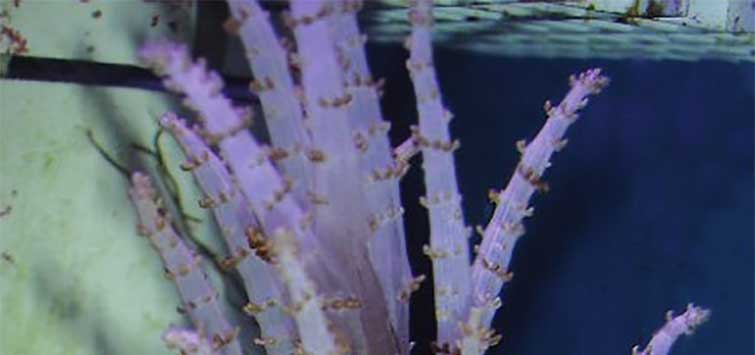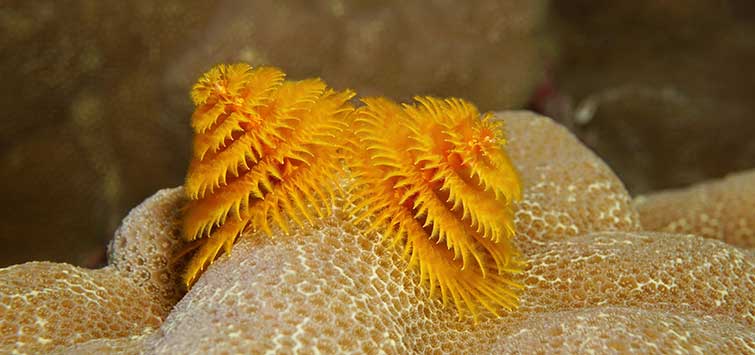Montipora efflorescens
Common Names: Velvet coral, encrusting velvet coral, velvet rock coral
Phylum: Cnidaria
Class: Anthozoa
Order: Scleractinia
Family: Acroporidae
Range: Indo-West Pacific and Red Sea, including western, northern, and eastern coasts of Australia east to Tahiti, and north to southern Japan
Natural Environment: This photosynthetic stony coral is usually found in the clear waters along upper reef slopes and reef crests, yet is also occasionally found in lagoons at different depths and where turbid conditions exist.
Water Requirements: Calcium 380 to 430 ppm, alkalinity 3.5 meq/l, pH 8.1 to 8.2, specific gravity 1.024 to 1.026, NO3 < 15 ppm, Mg approx. 1272 ppm, phosphate < .015 ppm, and a temperature range of 75° to 83°F (24° to 28°C).
Captive Care
This is an extremely hardy and disease-free stony coral. It is also fast growing, therefore it needs good water quality and intense lighting, with metal halides preferred in the range of at least 4 to 6 watts per gallon, to maintain its coloration. If maintained at light intensity lower than recommended, its zooxanthellae, the algae that generate the majority of its food supply, tend to proliferate. Since the animal is trying to photo-adapt to lower light intensities and these alga are brown, colorful specimens tend to turn brown because of the increased numbers of algal cells.
Coloration
There is quite a lot of captive-breeding and frag culturing where this genus is concerned, and various specimens of different species are often cultured under extreme high-intensity lamps to bring out attractive colors. It is always wise to ask under what conditions an interesting specimen was cultured, so as to be able to continue its coloration—otherwise a very nice red, green, or purple specimen may slowly turn an ordinary brown in your aquarium!
Positioning
Care should also be taken as to its position in the aquarium, as this species is basically defenseless against other corals, even those that are not overly aggressive. Moderate to strong water movement is also recommended, with an occasional strong wave of water movement to help keep detritus from collecting on its surfaces.
Water Quality
Water quality is another issue, as alkalinity and calcium levels should be carefully monitored and maintained near natural seawater levels, and phosphate kept at a low level.

.png?h=595&iar=0&w=2781&hash=5FD5E69473BCC22199FBFA2FB71B6033)



